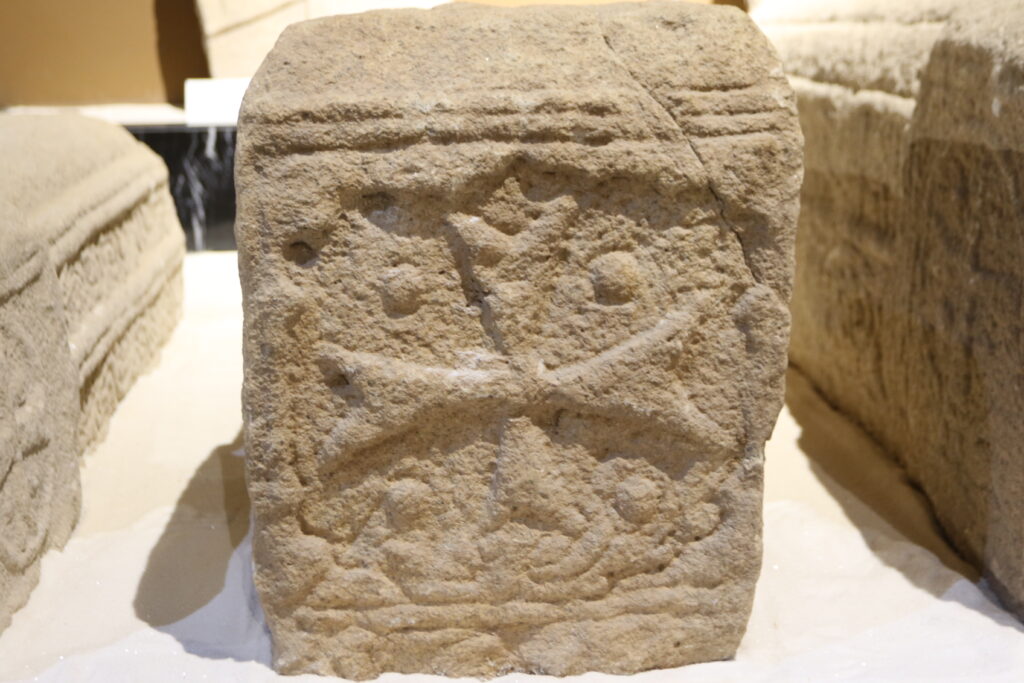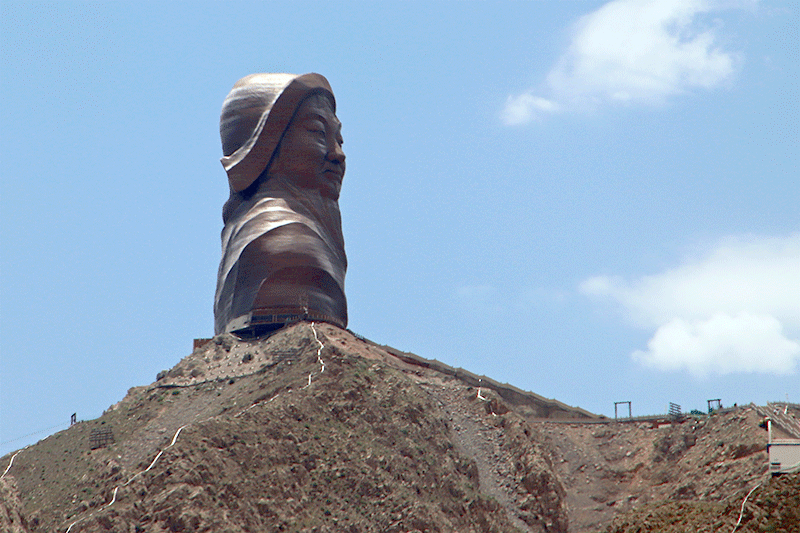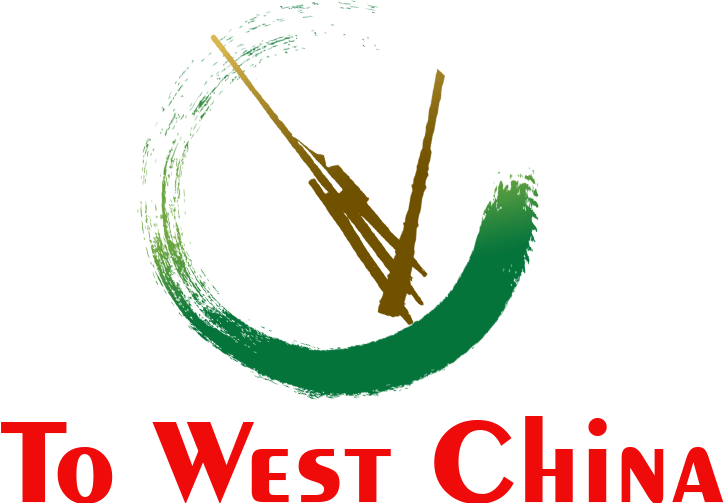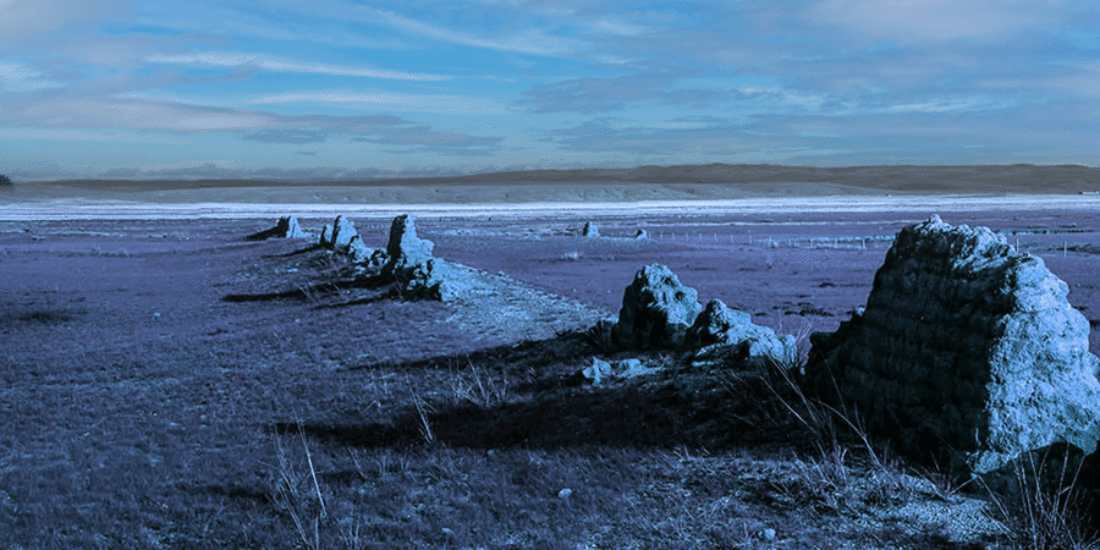Nestorianism in Darkhan Muminggan of Inner Monglia
By Lee Mao Qing( Our tour operator and guide)


In the windy, parched gobi desert of center Inner Mongolia of June ,1927, a Sino-Sweden archaeological research commission led by Sven Hedin, approached an isolated town relic which lies 40 kilometers to today’s Darhan Muminggan to the north of Baotou city. Tons of ancient boundary tablets, especially tomb stones curved with patterns of ancient Nestorian, uncovered a less known glory time of the popular religion in the Yuan dynasty, the period of history when Kublai Khan conquered the intercontinental empire from Caspian Sea to the north Korea peninsula.
The abandoned ancient town is known today as Aulun Sumu, surrounded by the clay wall with the surviving height of 3 meters, 950 meters in length and 580 meters in width. It is four times the size of the Meidaizhao ancient town of 200 kilometers to the south.
The less green grassland of today’s Darhan Muminggan United Banner in Inn Mongolia was inhabited by a sub group of Mongolian, known as Ongu. Before 11th century , Darhan Muminggan was the front border of Jin empire which covered today’s north east China to the seashore of Tatar Strait and Sakhalin of Rusia from 1115 to 1234 A.D. The ruler was Jurchen, of today’s Manchurian. The Jurchen emperor built a great wall to keep off the horse rider warriors of hill tribes to its north and west. The great wall, in Mongolian language, is spelled as Ungkuh, the Mongolian subgroup and then the mercenary of Jurchen was simply called Ongud.
When Kublai Khan became the ruler of grassland to the north of the Great Wall, his eyes fell on the wide land across the wall and far to the east seashore where the sun rises. But he must remove the stone in his shoes, the Ongud, the great wall watchdog of Jurchen, but not by force, but by religion and marriage. After years of diplomatic effort without shedding a drop of blood, the mercenary surrendered to Genghis Khan and was bestowed the title, King Zhao.
As Kublai Khan expanded his empire further to the east and seized Beijing , down to the rich lower reach Yellow River , silk road became prosperous again , tons of wealth flew to Aulun Sumu, one of the main important hubs on the silk road that connected
Beijing to Europe. Genghis’ mother was a Nestorian herself, though gossip told that she transferred to Confucian for the purpose of helping her son to rule the new land with a history of two thousand years of Confucianism.
Kublai Khan, the ruler and tyrant of east world in the new era, was tolerant, in fact, friendly toward all the religions in his empire. The Nestorianism which was popular in Syria, Iraq, Iran and far to the seashore of Mediterranean, ruled by his elder brother, Mongke Khan. The merchants traveled freely along the silk road, stimulated the consumption and production along the silk road, fed the towns with wealth. the Nestorian bishops from Damascus, followed steps of the merchants, preached west religion to the local Mongolians, Han Chinese and those ethnic who welcomed the wealth from the intercontinental trade. Aulun Sumu was not an exception, became very wealthy and a sanctuary of Nestorianism. Dozens of princesses from the later Mongolian Khans, were married to the King Zhao’s family to concrete the connections, so the town owned a nick name, a City of the Son-in-law.
In 1360s, the late of Yuan Dynasty, the Han Chinese militants, known as Red Turban Rebels, marched from Baotou, the south suburb of Darkhan Muminggan. The group known as Mieli, The subgroup of Ongud, surrendered and opened the gate to the rebel after short skirmish. Badu Temur, the last Khan of Aulun Sumu, broke the surrounded and fled his life with his concubines, left the magnificent wealthy city behind till it was completely abandoned , till it was discovered by the joint Sino-Sweden archaeological research team in June of 1927.


0 Comments